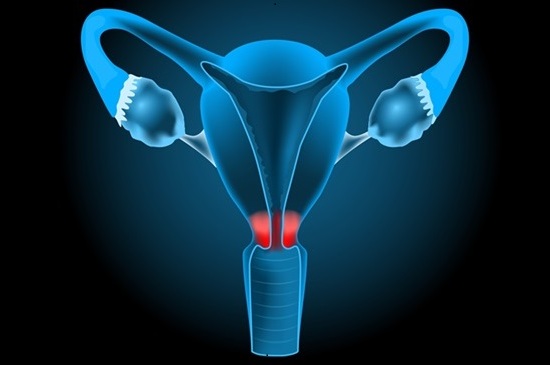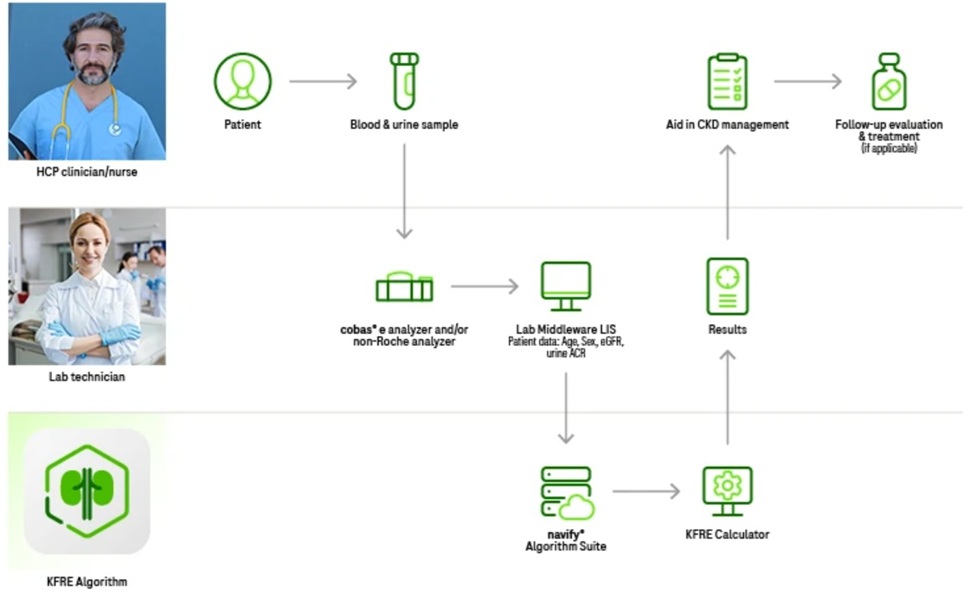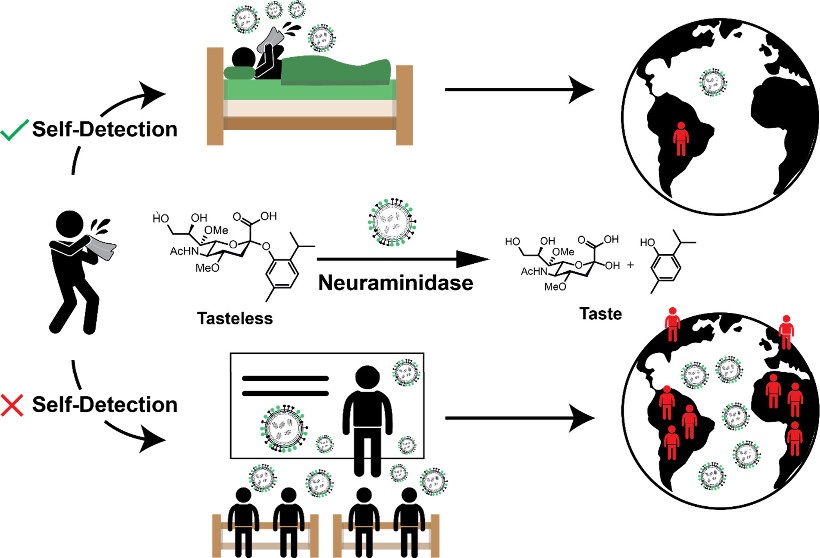Presepsin Values Evaluated as Sepsis Severity Markers
|
By LabMedica International staff writers Posted on 23 Jun 2020 |
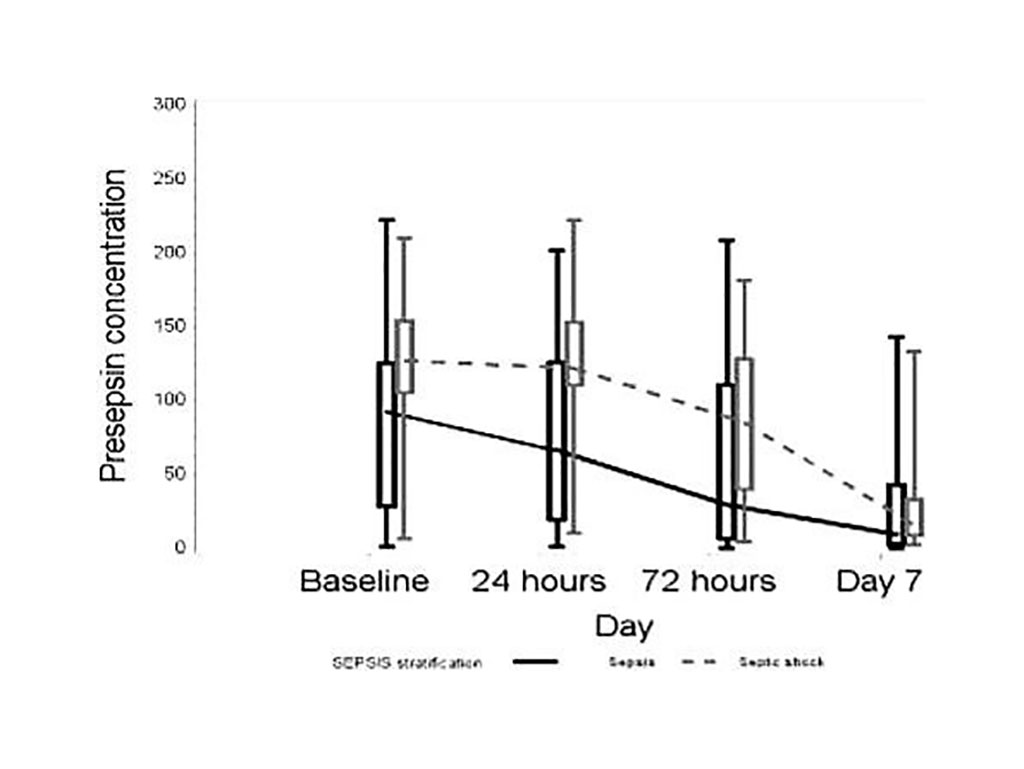
Image: Presepsin concentrations (ng/mL) in two severity groups. Black line: sepsis patients; black dotted line: septic shock patients (Photo courtesy of University Hospital for Infectious Diseases in Zagreb).
Sepsis is a life-threatening condition, with poor and highly variable clinical manifestations, difficult to identify and diagnose. Sepsis has remained a real diagnostic challenge to clinicians, causing millions of death worldwide each year. Early recognition of sepsis is crucial for better disease outcome.
Blood cultures are a gold standard for diagnosing sepsis. Despite the great advantages, blood cultures also have some limitations as they are often negative, especially in patients previously treated with antibiotic, and their results are usually obtained over several days. While waiting for blood culture results, treatment of critically ill septic patients may be delayed, increasing the possibility of poor outcome.
Infectious disease specialist at the University Hospital for Infectious Diseases (Zagreb, Croatia) and their colleagues conducted a prospective observational study in two university clinical centers and enrolled 100 septic patients during two time periods. New Sepsis-3 definitions were used for sepsis stratification. Biomarkers and SOFA score were evaluated four times during the illness.
Routine laboratory parameters and C-reactive protein (CRP) were tested immediately. For procalcitonin (PCT) and presepsin levels measurements, blood was collected at all four time points, frozen until the end of the study, and then measured. Quantitative analysis of PCT was performed using an automated electrochemiluminescence immunoanalyzer (ELECSYS* BRAHMS* PCT; Roche Diagnostics, Mannheim, Germany). A sandwich enzyme-linked immune-sorbent assay ̶ Human Presepsin ELISA Kit (Nordic Biosite, Täby, Sweden), was used for presepsin measurement.
The following laboratory parameters were recorded: red blood cell count, hemoglobin, hematocrit, white blood cell count, platelet count, serum creatinine, serum total bilirubin, serum liver enzymes (aspartate aminotransferase-AST and alanine aminotransferase-ALT), partial thromboplastin time (PTT), international normalized ratio (INR), electrolytes (sodium and potassium), blood gas analysis, CRP, PCT, and presepsin concentrations.
The scientists reported that presepsin concentrations were significantly higher on admission in 34 patients with septic shock compared to 66 patients with sepsis, mean ± SD: 128.5 ± 47.6 ng/mL versus 88.6 ± 65.6 ng/mL, respectively. The same was not observed for PCT and CRP; their concentrations did not differ significantly between severity groups. A strong correlation of presepsin with SOFA score was also found.
The authors concluded that their study showed that serum presepsin concentration on admission reflects the severity of disease. Presepsin was a better predictor of multiple organ dysfunction syndrome compared to other tested sepsis biomarkers. The strong correlation of presepsin with SOFA score makes this marker a valuable tool for identifying septic patients. PCT and CRP concentrations did not differ between sepsis severity groups. The study was published in the June, 2020 issue of the International Journal of Infectious Diseases.
Blood cultures are a gold standard for diagnosing sepsis. Despite the great advantages, blood cultures also have some limitations as they are often negative, especially in patients previously treated with antibiotic, and their results are usually obtained over several days. While waiting for blood culture results, treatment of critically ill septic patients may be delayed, increasing the possibility of poor outcome.
Infectious disease specialist at the University Hospital for Infectious Diseases (Zagreb, Croatia) and their colleagues conducted a prospective observational study in two university clinical centers and enrolled 100 septic patients during two time periods. New Sepsis-3 definitions were used for sepsis stratification. Biomarkers and SOFA score were evaluated four times during the illness.
Routine laboratory parameters and C-reactive protein (CRP) were tested immediately. For procalcitonin (PCT) and presepsin levels measurements, blood was collected at all four time points, frozen until the end of the study, and then measured. Quantitative analysis of PCT was performed using an automated electrochemiluminescence immunoanalyzer (ELECSYS* BRAHMS* PCT; Roche Diagnostics, Mannheim, Germany). A sandwich enzyme-linked immune-sorbent assay ̶ Human Presepsin ELISA Kit (Nordic Biosite, Täby, Sweden), was used for presepsin measurement.
The following laboratory parameters were recorded: red blood cell count, hemoglobin, hematocrit, white blood cell count, platelet count, serum creatinine, serum total bilirubin, serum liver enzymes (aspartate aminotransferase-AST and alanine aminotransferase-ALT), partial thromboplastin time (PTT), international normalized ratio (INR), electrolytes (sodium and potassium), blood gas analysis, CRP, PCT, and presepsin concentrations.
The scientists reported that presepsin concentrations were significantly higher on admission in 34 patients with septic shock compared to 66 patients with sepsis, mean ± SD: 128.5 ± 47.6 ng/mL versus 88.6 ± 65.6 ng/mL, respectively. The same was not observed for PCT and CRP; their concentrations did not differ significantly between severity groups. A strong correlation of presepsin with SOFA score was also found.
The authors concluded that their study showed that serum presepsin concentration on admission reflects the severity of disease. Presepsin was a better predictor of multiple organ dysfunction syndrome compared to other tested sepsis biomarkers. The strong correlation of presepsin with SOFA score makes this marker a valuable tool for identifying septic patients. PCT and CRP concentrations did not differ between sepsis severity groups. The study was published in the June, 2020 issue of the International Journal of Infectious Diseases.
Latest Microbiology News
- Fast Noninvasive Bedside Test Uses Sugar Fingerprint to Detect Fungal Infections
- Rapid Sepsis Diagnostic Device to Enable Personalized Critical Care for ICU Patients
- Microfluidic Platform Assesses Neutrophil Function in Sepsis Patients
- New Diagnostic Method Confirms Sepsis Infections Earlier
- New Markers Could Predict Risk of Severe Chlamydia Infection
- Portable Spectroscopy Rapidly and Noninvasively Detects Bacterial Species in Vaginal Fluid
- CRISPR-Based Saliva Test Detects Tuberculosis Directly from Sputum
- Urine-Based Assay Diagnoses Common Lung Infection in Immunocompromised People
- Saliva Test Detects Implant-Related Microbial Risks
- New Platform Leverages AI and Quantum Computing to Predict Salmonella Antimicrobial Resistance
- Early Detection of Gut Microbiota Metabolite Linked to Atherosclerosis Could Revolutionize Diagnosis
- Viral Load Tests Can Help Predict Mpox Severity
- Gut Microbiota Analysis Enables Early and Non-Invasive Detection of Gestational Diabetes
- Credit Card-Sized Test Boosts TB Detection in HIV Hotspots
- Fecal Metabolite Profiling Predicts Mortality in Critically Ill Patients
- Portable Molecular POC System Rules Out UTIs in Just 35 Minutes
Channels
Molecular Diagnostics
view channel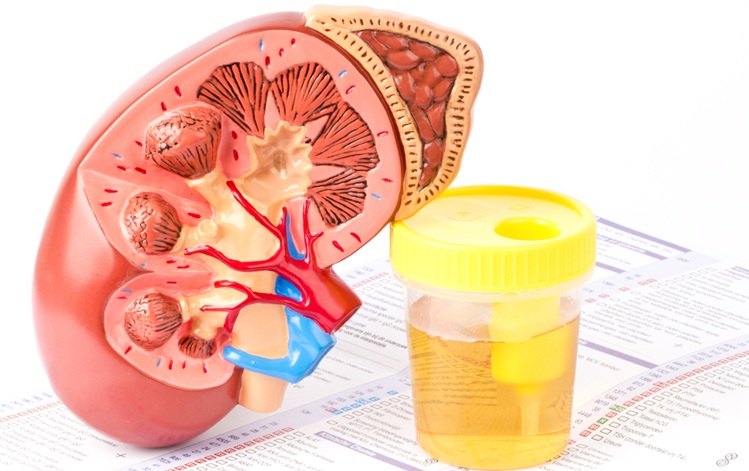
Urine Test Could Replace Painful Kidney Biopsies for Lupus Patients
Lupus is an autoimmune disorder that causes the immune system to attack the body’s own tissues and organs. Among the five million people living with lupus globally, nearly half develop lupus nephritis,... Read more
Blood Test Guides Post-Surgical Immunotherapy for Muscle-Invasive Bladder Cancer
After surgery for muscle-invasive bladder cancer, many patients face uncertainty about whether residual cancer cells remain in their bodies. Now, a new international phase 3 study has demonstrated that... Read more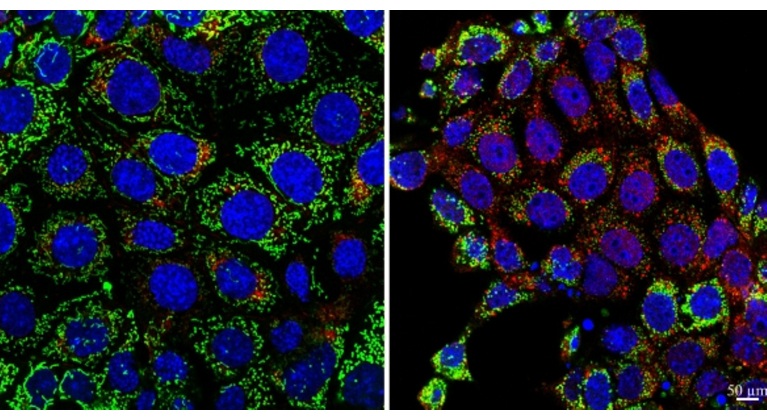
Mitochondrial DNA Mutations from Kidney Stressors Could Predict Future Organ Decline
Kidney-related diseases are alarmingly common: chronic kidney disease (CKD) affects more than one in seven U.S. adults, while about 20% of hospitalized adults are diagnosed with acute kidney injury (AKI).... Read moreHematology
view channel
Viscoelastic Testing Could Improve Treatment of Maternal Hemorrhage
Postpartum hemorrhage, severe bleeding after childbirth, remains one of the leading causes of maternal mortality worldwide, yet many of these deaths are preventable. Standard care can be hindered by delays... Read more
Pioneering Model Measures Radiation Exposure in Blood for Precise Cancer Treatments
Scientists have long focused on protecting organs near tumors during radiotherapy, but blood — a vital, circulating tissue — has largely been excluded from dose calculations. Each blood cell passing through... Read more
Platelets Could Improve Early and Minimally Invasive Detection of Cancer
Platelets are widely recognized for their role in blood clotting and scab formation, but they also play a crucial role in immune defense by detecting pathogens and recruiting immune cells.... Read more
Portable and Disposable Device Obtains Platelet-Rich Plasma Without Complex Equipment
Platelet-rich plasma (PRP) plays a crucial role in regenerative medicine due to its ability to accelerate healing and repair tissue. However, obtaining PRP traditionally requires expensive centrifugation... Read moreImmunology
view channel
Molecular Microscope Diagnostic System Assesses Lung Transplant Rejection
Lung transplant recipients face a significant risk of rejection and often require routine biopsies to monitor graft health, yet assessing the same biopsy sample can be highly inconsistent among pathologists.... Read more
Blood Test Tracks Treatment Resistance in High-Grade Serous Ovarian Cancer
High-grade serous ovarian cancer (HGSOC) is often diagnosed at an advanced stage because it spreads microscopically throughout the abdomen, and although initial surgery and chemotherapy can work, most... Read more
Luminescent Probe Measures Immune Cell Activity in Real Time
The human immune system plays a vital role in defending against disease, but its activity must be precisely monitored to ensure effective treatment in cancer therapy, autoimmune disorders, and organ transplants.... Read more
Blood-Based Immune Cell Signatures Could Guide Treatment Decisions for Critically Ill Patients
When a patient enters the emergency department in critical condition, clinicians must rapidly decide whether the patient has an infection, whether it is bacterial or viral, and whether immediate treatment... Read moreMicrobiology
view channel
Fast Noninvasive Bedside Test Uses Sugar Fingerprint to Detect Fungal Infections
Candida bloodstream infections are a growing global health threat, causing an estimated 6 million cases and 3.8 million deaths annually. Hospitals are particularly vulnerable, as weakened patients after... Read more
Rapid Sepsis Diagnostic Device to Enable Personalized Critical Care for ICU Patients
Sepsis is a life-threatening condition that occurs when the body’s response to infection spirals out of control, damaging organs and leading to critical illness. Patients often arrive at intensive care... Read morePathology
view channel
AI-Powered Method Combines Blood Data to Accurately Measure Biological Age
Chronological age tells us how many years we’ve lived, but not how quickly our bodies are ageing. Some people stay healthy well into their 80s or 90s, while others experience decline much earlier.... Read more
AI Tool Detects Cancer in Blood Samples In 10 Minutes
Detecting cancer recurrence or spread often depends on identifying rare tumor cells circulating in the bloodstream — a process known as a liquid biopsy. However, current methods rely on trained specialists... Read moreTechnology
view channel
Viral Biosensor Test Simultaneously Detects Hepatitis and HIV
Globally, over 300 million people live with Hepatitis B and C, and 40 million with HIV, according to WHO estimates. Diagnosing bloodborne viruses such as HIV and Hepatitis B and C remains challenging in... Read more
Acoustofluidic Device to Transform Point-Of-Care sEV-Based Diagnostics
Rapid and sensitive detection of small extracellular vesicles (sEVs)—key biomarkers in cancer and organ health monitoring—remains challenging due to the need for multiple preprocessing steps and bulky... Read moreIndustry
view channel
Advanced Instruments Merged Under Nova Biomedical Name
Advanced Instruments (Norwood, MA, USA) and Nova Biomedical (Waltham, MA, USA) are now officially doing business under a single, unified brand. This transformation is expected to deliver greater value... Read more














